Engaged Anthropology Grant: Rosa Ficek Torres
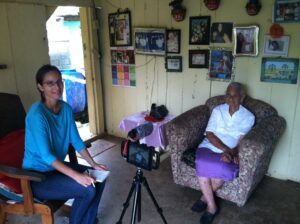
While a doctoral student at the University of California, Santa Cruz, Rosa Ficek Torres received a Dissertation Fieldwork Grant in 2011 to aid research on ‘Migration and Integration Along the Pan American Highway in Panama’s Darien Gap,’ supervised by Dr. Anna Tsing. In 2014 she received an Engaged Anthropology Grant to aid engaged activities on ‘Collaborations for a Digital Exhibit: Perspectives on Integration from the Margins of Panama,’ 2015, Panama.
Roads let us access new landscapes, meet people, reach resources. But they do more than that. Roads make landscapes, refashioning social relations and geographies as people, things, and ideas come into contact. Tracing the encounters that take place because of, and along, lines of transport and communication can help us understand what happens when people and places are connected by technologies in new or different ways. My dissertation research considers the social effects of roads, asking how social collectivities emerge, how power and difference shape spaces of belonging and exclusion through and with these material routes.
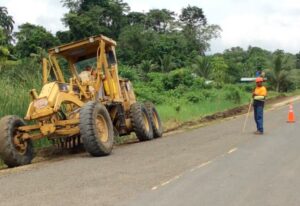
With support from a Wenner-Gren Dissertation Fieldwork Grant, I traveled to Panama to research a road built to integrate a peripheral area into the national culture, political system, and economy. This road was built in the 1970s to connect Panama to its easternmost province. Migrant peasants from central and western Panama settled along its edges, attracted by tales of abundant land free for the taking. Meanwhile, government planners saw the settlers as agents of modernization. They replaced forests with fields and pastures, establishing relations of property and production that would—planners hoped—drive development while also extending state power into a marginal region. The road was the central figure in these transformations, bringing settlers and state institutions in, taking products out.
Through oral histories of migration and community formation I found that settlers, who soon found themselves stuck on a deteriorated road that signaled isolation and government abandonment, integrated themselves anyway. They used forest materials and communal labor to build schools and rural aqueducts, fundraised for journeys to the city to petition the government for teachers, engineers, and plastic pipes, and maintained the road with stones and gravel dug up from the rivers. However, these oral histories also complicated ideas of integration as the expansion of state power, national culture, and capitalist relations by showing how the indigenous and afrodescendent people who were already living in the area contributed to the making and remaking of the highway, at the same time that these contributions were obscured in settler narratives. Moreover, settlers themselves adapted to the new landscape at the same time that they transformed it. The road, rather than being a force of assimilation, is heterogeneous, brought to life by diverse histories and mobilities that transform its materiality and meaning.
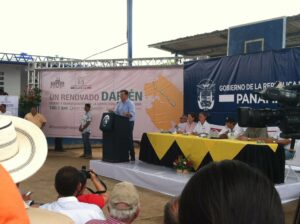
I returned to Panama in July and August 2015 to share my findings with the communities where I had done research. The road, which during fieldwork in 2008 and 2009 had been repaired and paved with asphalt, had again deteriorated. And yet again machines rumbled, earth was moved, and orange-vested crews worked on repairs to its surface. Among local residents, dissatisfaction with the previous constrution company’s performance had turned into bitter disappointment once the new pavement fell to pieces. This time around, people were determined that things would be different. During the ceremony authorizing the initiation of roadwork the president of the republic gave a speech that echoed promises made repeatedly since the 1960s: the road would facilitate the transport and comercialization of agricultural products, he said, bring economic and social development, and integrate a province that had been isolated from national development. In the audience, members of the vigilance committees that were forming in roadside communities greeted each other with handshakes and slaps on the back. They were organizing to ensure that the road was properly remade. For them, that meant learning which materials were going to be used to rehabilitate the road, and from which local source, and taking samples to a laboratory for independent analysis using their own funds. The transitability of the road depended on the right materials.
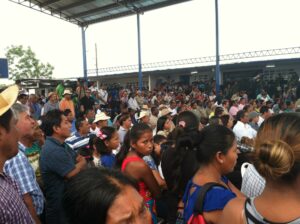
It was within this context that I carried out the activities related to my Engaged Anthropology Grant—amidst roadwork, amidst a collective feeling of guarded hope, a sense of progress-in-the-making that seemed at odds with the insistent, cyclical deteriorations of the road and the repeated disappointments and setbacks local residents had experienced. I held a series of meetings in communities in which I presented my dissertation findings, reviewed and revised written portions of the manuscript with informants, and conducted oral history workshops where community members were able to narrate their accounts of development on their own terms, identifying the themes and stories that most mattered to them. These oral histories were recorded and assembled into DVDs that were distributed to community members, civil society leaders, and teachers for use in the classroom.
The goal in documenting these histories was to provide alternative representations of a region that is often stereotyped in the media and popular imaginations as a backward province. People think that there is nothing here in Darien, that there is no development, that we’re living in the wilderness, residents often noted. The oral histories worked against these representations by offering counter narratives of a kind of development different from that promoted by the government—of people organizing and using their own time and resources, drawing on forms of communal labor, to build rural aqueducts, schools and churches, petitioning the government for technical assistance and supplies to complete the works. These narratives help us situate the current rehabilitation of the road, people’s keen interest in the work, and the vigilance committees within a history of development where people had to make do and find ways to survive in the absence of the development that had been promised, and that had enchanted them. If things were going to be different this time—if the new pavement lasted and the road indeed reduced inequality in the region—it would be an achievement of local communities, not something that was formulated outside and handed to them.
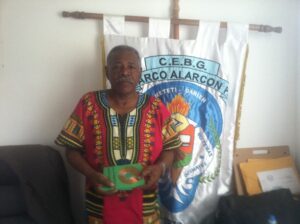
And yet, the accounts people told about their experiences migrating to an unfamiliar place, the loneliness, the malaria, the hard work of building homes with handsaws and axes, of raising families without adequate water supplies, reveal other kinds of histories that destabilize narratives of development, of progress marching forward because it has to. These oral histories hold the shadow of a suggestion that some places should never have been settled at all. At least not in the way that settlers had gone about doing things, clearing forest to the extent that deforestation and loss of biodiversity are the current enviornmental buzzwords, boosting productivity with pesticides that poisoned the already meager water supplies, locating homes and communities in sites that were terribly inaccessible, far from rivers and coasts that offered alternative means of transport—practices that led to the growth of villages and towns with electricity, paved roads, schools, health centers, gas stations, supermarkets, and restaurants, but that also created a situation where you never know if water will run when you open the tap, where pastures extend for hectares but you can’t buy a decent cut of meat, where former landowners who farmed for their families as well as the market now work for uncertain wages after selling to ranchers or teak companies. Things had changed a lot, people reflected in their oral histories. One woman, like many others, recalled feeling despair when she reached the land that would be her new home, breaking down and crying with the realization that it had all been a big misunderstanding, that the stories about good free land were partially true at best. Todo parece un sueño, she sighed. It all seems like a dream.